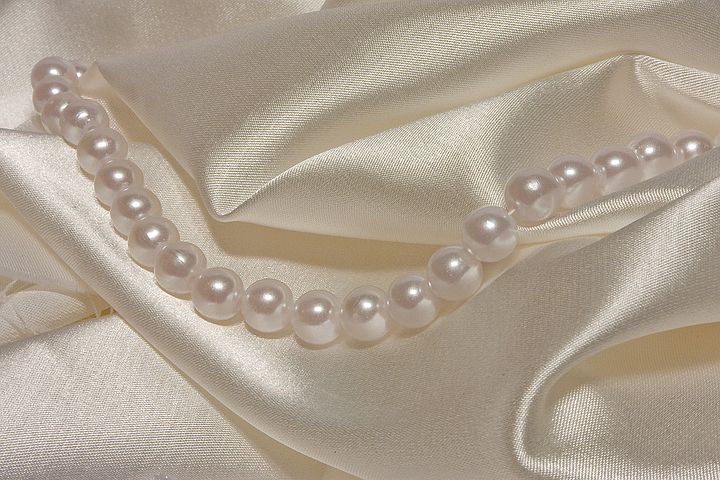Pearls, can you tell the difference between saltwater pearls and freshwater pearls? Are saltwater pearls better than freshwater pearls? Saltwater pearls are usually more valuable than freshwater pearl. However, with today’s technology, some freshwater pearls look and feel as beautiful and valuable as salt water pearls.
Pearl is a beautiful gemstone, composed of calcium carbonate in minute crystalline form. Pearls are mainly white, gold, pink, black, grey, purple, green and blue in colours. There are many variants of colours in pearls too. Pearl has 1.52-1.69 refractive index. Its specific gravity os around 2.6-2.85 and on mohs hardness ranges from 2.5 to 3.0.
Pearls are very beautiful gems and popular for beaded necklaces, bracelets, earrings and solitaires rings and pendants. Though mainly round and oval, there are pearls that comes in different shapes and sizes. For example, natural abalone pearls are horn shaped.
Natural pearls are pearls naturally grown in oysters, mussels, sea snails, conch and abalone. These days, there are many culturally grown pearls via culturing process to grow on farm oysters or mussels for their pearls.
Pearls can be found on the Atlantic Ocean, Indian Ocean, Pacific Ocean, Carribean Sea, Mediterranean Sea. Pearls are also found in Japan, Indonesia, Phillipines, China, Taiwan, USA, Coast of Mexico, Chile, South Africa, New Zealand and Australia.

Saltwater Pearls vs Freshwater Pearls
Pearls grow in mussels and oysters. Freshwater pearls are produced in mussel while south sea pearls are produced by oysters farmed in salt water. A single freshwater mussel can produce up to 50 pearls at one time, while oyster produces one to two pearl at one time.
Salt water pearls are more valuable than fresh water pearls. However, with today’s technology , freshwater pearls are becoming as good too.
Akoya Saltwater Pearls
Mikimoto is associated with Akoya pearls. Akoya pearl was first produced in Japan in 1893. Akoya pearls are salt water pearl grown in Japan and now China and India. The oyster used to grow Akoya pearls is known as Pinctada fucata martensii. The oysters are seeded with a round bead, made of mother of pearl. This is why akoya pearls are predominantly round in shape.
Hanadama Saltwater Pearls
Hanadama pearls are highest grade of saltwater akoya pearls. Each hanadama grade pearl is accompanied by a numbered certificate from the Pearl Science Laboratory of Japan.
Natural white refers to the untreated hanadama pearl. Regular white hanadama pearls usually comes with a tinge of rose overtone or slight pink.
South Sea Pearls
South sea pearls are salt water cultured pearls. They are large in size and thick in nacre. Mainly found in Australia, Indonesia and Phillipines. South sea cultured pearls are mainly white, gold and silver in colour.

There is another alternative of high quality south sea pearls also known as edison pearls. Harvested in freshwater mussels, they are more affordable.
Tahitian Pearls
Tahitian pearls are also grown like south sea pearls. Tahitian pearls are grown in black lipped oyster. That is why Tahitian pearls are usually known for its black pearls or darker in colour pearls like black, dark grey, cobalt blue and dark green. Tahitian pearls are usually found in the islands of French Polynesia.
How are Pearls Valued
The value of a pearl is assessed based on the following & characteristics of each pearl.

Luster – Pearl with high luster give the pearl sharp bright reflections from the surface of the pearl
Surface Quality -The lesser the blemishes found on the pearl the higher the value is
Shape – Pearl comes in many shapes, mainly round, oval, button, droplets, baroque. Spherical and symmetrical pearls are highly valued.
Colour – White is the classic colour of pearl. However, pearls comes in many shades of colours too, of white, golden, grey, pink, green, purple, orange and etc.
Nacre thickness – Pearl is evaluated with acre thickness to ensure that they are not just beautiful but durable
Size – Cultured pearls range from 2mm to 16mm in diameter
And if more than one piece for jewelry, is the addition of matching of the pearls.
How to tell if your pearls are real or fake.
Get your pearls today.


